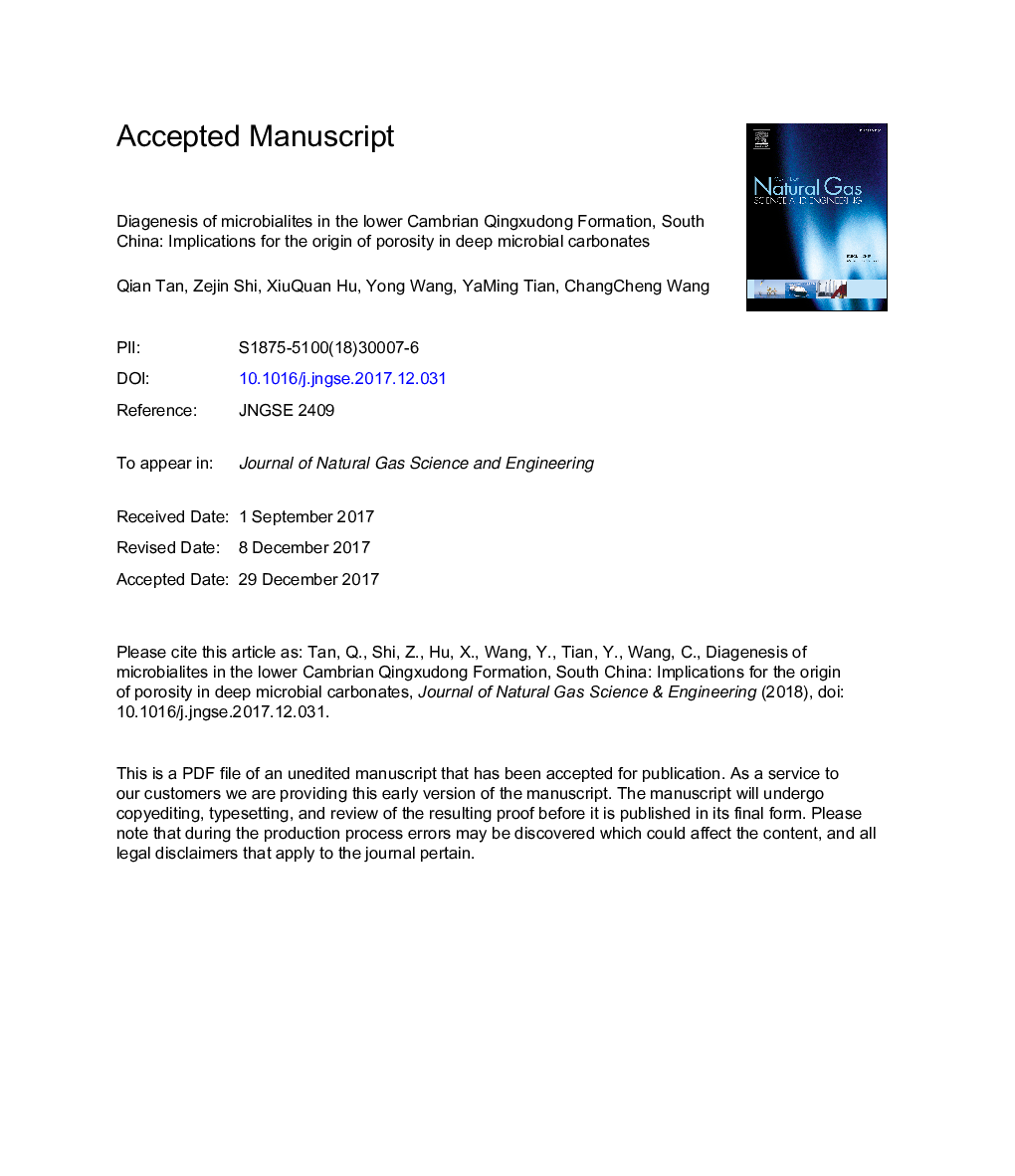| کد مقاله | کد نشریه | سال انتشار | مقاله انگلیسی | نسخه تمام متن |
|---|---|---|---|---|
| 8128339 | 1522992 | 2018 | 61 صفحه PDF | دانلود رایگان |
عنوان انگلیسی مقاله ISI
Diagenesis of microbialites in the lower Cambrian Qingxudong Formation, South China: Implications for the origin of porosity in deep microbial carbonates
دانلود مقاله + سفارش ترجمه
دانلود مقاله ISI انگلیسی
رایگان برای ایرانیان
موضوعات مرتبط
مهندسی و علوم پایه
علوم زمین و سیارات
علوم زمین و سیاره ای (عمومی)
پیش نمایش صفحه اول مقاله

چکیده انگلیسی
Understanding microbial carbonate is one of the most challenging issues in the field of carbonate sedimentology and reservoir. The biotic and abiotic processes that control microbial carbonate precipitation are becoming more established, but the influence of subsequent diagenesis on microbial carbonate reservoirs has not been adequately studied. Here, we describe microbial carbonate from the lower Cambrian Qingxudong Formation in southeastern Sichuan Basin to assess their formation, textures and subsequent diagenesis. Six stages of calcite cementation (Calcite-1 to Calcite-6) and four stages of dissolution (Dis-1 to Dis-4) were identified in microbialites of the Qingxudong Formation. Stromatolites and thrombolites have a different porosity evolution. Sedimentary processes are the fundamental controlling factors of creating pre-existing pores in stromatolites. For thrombolites, the formation of pre-existing pores is attributed to island dissolution and dolomitization in near-surface processes. Microbial metabolic activities contribute more to the dissolution and dolomitization than mixing water. Meteoric water dissolution (Dis-1) in synsedimentary processes and microbial dissolution (Dis-2) in near-surface processes are the fundamental control factors of porosity creation in microbial carbonate of Qingxudong Formation. Thermochemical sulfate reduction (TSR) is a double-edged sword for the porosity development. The destructive effect of TSR on microbial carbonate reservoirs is greater than the constructive effect. The microbial carbonate reservoirs, especially the fabric-destructive dolomite (Dol-2) evolved by thrombolites, have great potential for gas exploration in the Qingxudong Formation. This study is especially useful for further understanding deeply buried microbialite reservoir formation and development, and deep hydrocarbon exploration in this basin and elsewhere worldwide.
ناشر
Database: Elsevier - ScienceDirect (ساینس دایرکت)
Journal: Journal of Natural Gas Science and Engineering - Volume 51, March 2018, Pages 166-182
Journal: Journal of Natural Gas Science and Engineering - Volume 51, March 2018, Pages 166-182
نویسندگان
Qian Tan, Zejin Shi, XiuQuan Hu, Yong Wang, YaMing Tian, ChangCheng Wang,